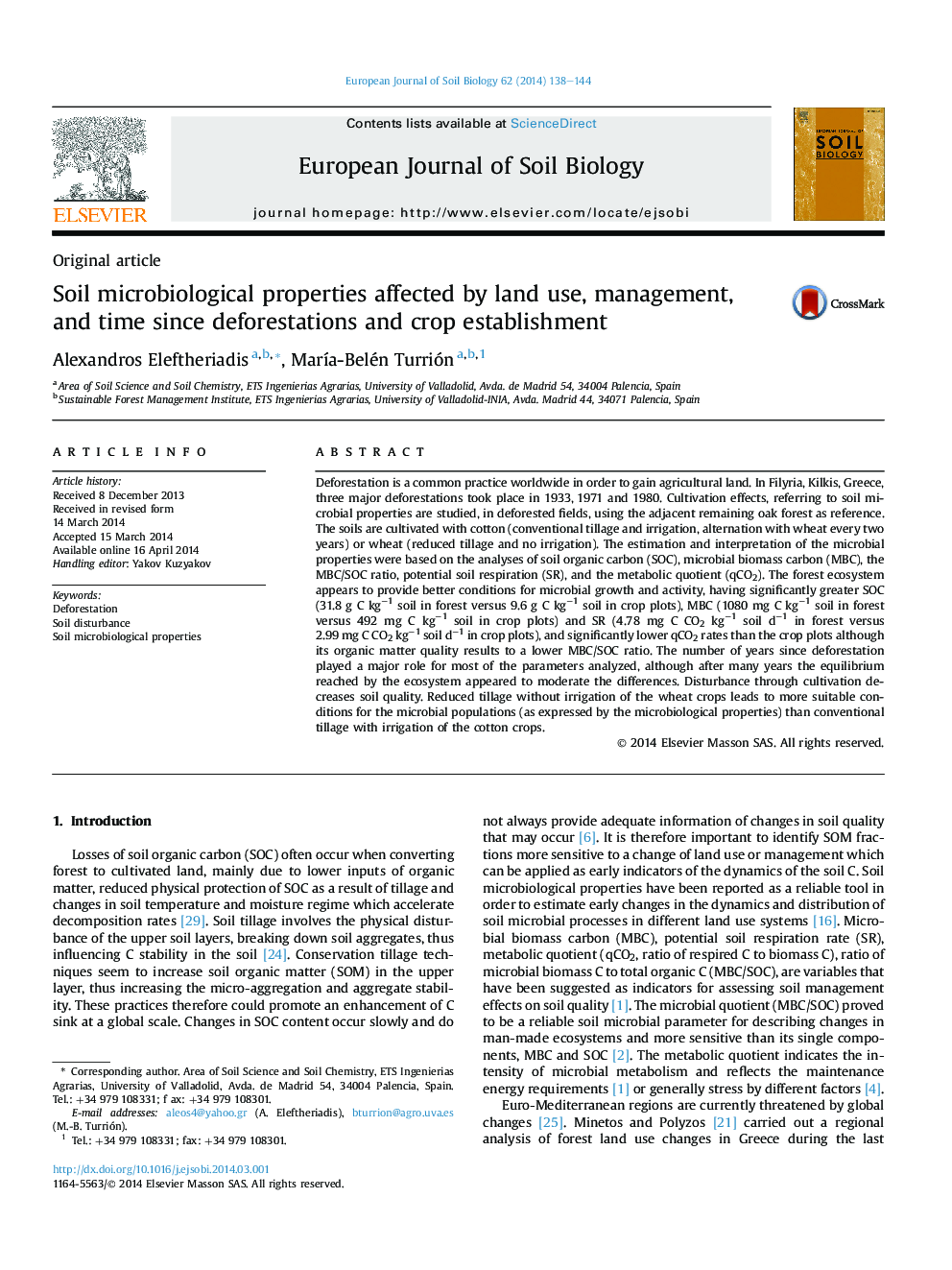| کد مقاله | کد نشریه | سال انتشار | مقاله انگلیسی | نسخه تمام متن |
|---|---|---|---|---|
| 4391836 | 1618130 | 2014 | 7 صفحه PDF | دانلود رایگان |
• Deforestation impacts in agricultural sites are assessed by differences in microbiological properties.
• Organic C, soil microbial biomass and soil respiration were examined.
• Results imply deterioration of soil quality factors related to chemical and microbiological properties.
Deforestation is a common practice worldwide in order to gain agricultural land. In Filyria, Kilkis, Greece, three major deforestations took place in 1933, 1971 and 1980. Cultivation effects, referring to soil microbial properties are studied, in deforested fields, using the adjacent remaining oak forest as reference. The soils are cultivated with cotton (conventional tillage and irrigation, alternation with wheat every two years) or wheat (reduced tillage and no irrigation). The estimation and interpretation of the microbial properties were based on the analyses of soil organic carbon (SOC), microbial biomass carbon (MBC), the MBC/SOC ratio, potential soil respiration (SR), and the metabolic quotient (qCO2). The forest ecosystem appears to provide better conditions for microbial growth and activity, having significantly greater SOC (31.8 g C kg−1 soil in forest versus 9.6 g C kg−1 soil in crop plots), MBC (1080 mg C kg−1 soil in forest versus 492 mg C kg−1 soil in crop plots) and SR (4.78 mg C CO2 kg−1 soil d−1 in forest versus 2.99 mg C CO2 kg−1 soil d−1 in crop plots), and significantly lower qCO2 rates than the crop plots although its organic matter quality results to a lower MBC/SOC ratio. The number of years since deforestation played a major role for most of the parameters analyzed, although after many years the equilibrium reached by the ecosystem appeared to moderate the differences. Disturbance through cultivation decreases soil quality. Reduced tillage without irrigation of the wheat crops leads to more suitable conditions for the microbial populations (as expressed by the microbiological properties) than conventional tillage with irrigation of the cotton crops.
Journal: European Journal of Soil Biology - Volume 62, May–June 2014, Pages 138–144
